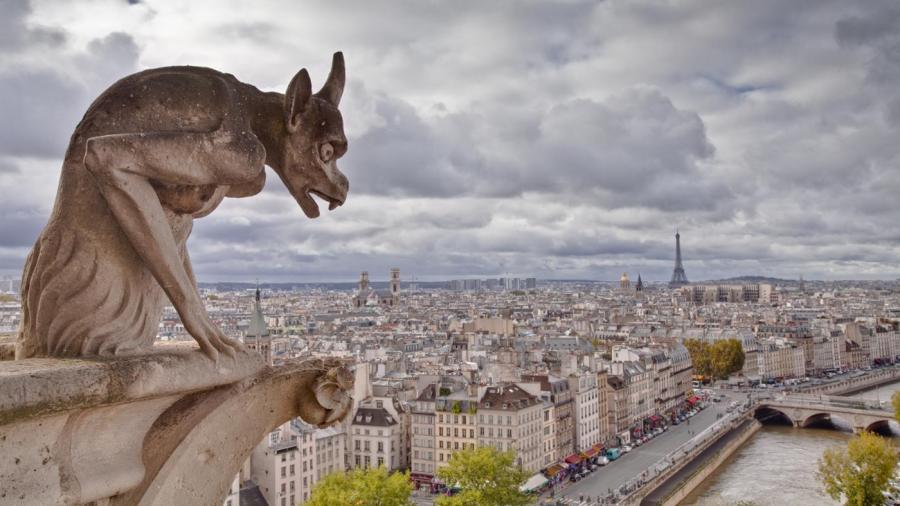Why Are There Gargoyles in the Notre Dame Cathedral?

The gargoyles on Notre Dame cathedral were built as water spouts to prevent damage to the masonry by deflecting rainwater from the sides of the building. After the installation of drain pipes in the 16th century, the gargoyles were merely ornamental.
The word “gargoyle” comes from the Latin “gurgulio” and the French “garguille,” which mean gullet or throat and suggest a gargling sound. In Italian, gargoyle is “doccione,” which means protruding gutter. Typically, water entered the creature and spouted out through its mouth. The term gargoyle included not only grotesquely-shaped waterspouts, but also other sorts of drains, including those in the shape of animals and people as well as non-ornamented gutters. In Medieval times, the grotesque shapes of gargoyles were used to frighten the illiterate people and demonstrate the concept of evil. Congregants also believed that gargoyles kept away evil from the church by frightening evil spirits.
The original gargoyles on Notre Dame cathedral were constructed in the late 12th century. However, during the French Revolution in the late 18th century, fanatics stripped the gargoyles from the building and destroyed them. In the 1830s, an architect restored the gargoyles to the sides of the cathedral. They bore little resemblance to the originals, but were rather renditions as interpreted by the contemporary artisans.





